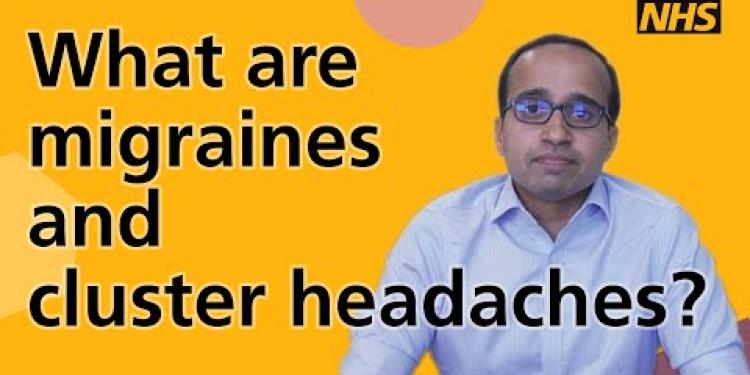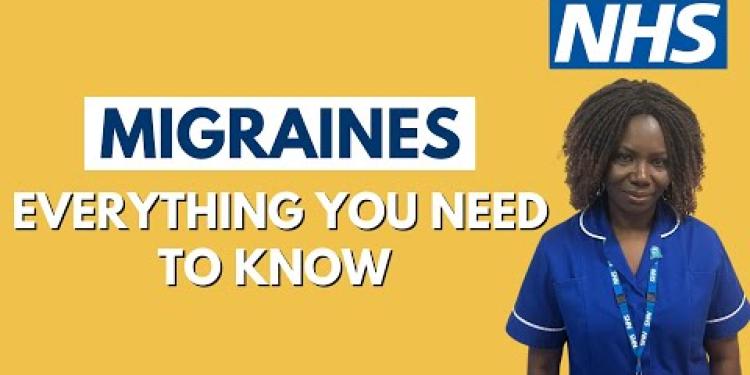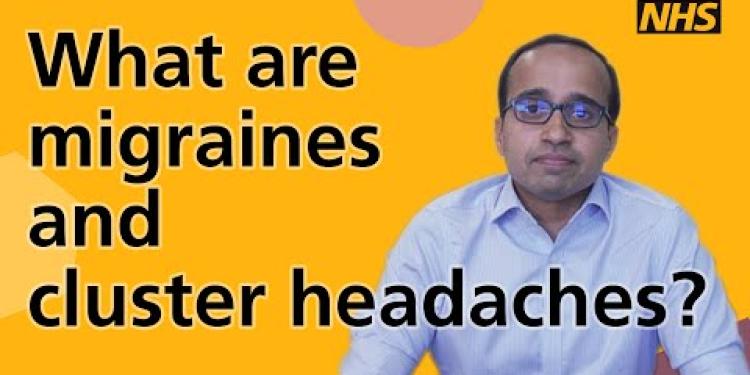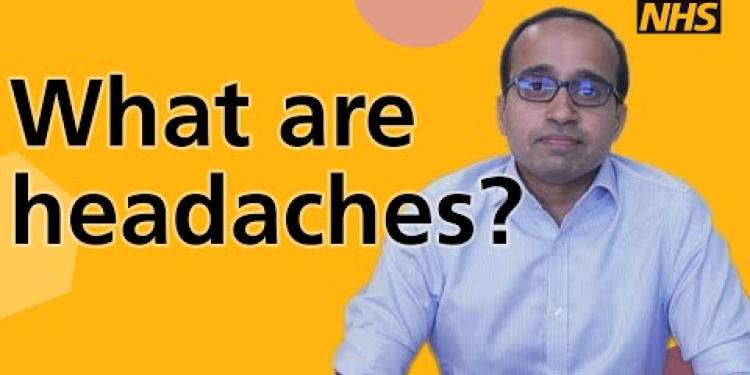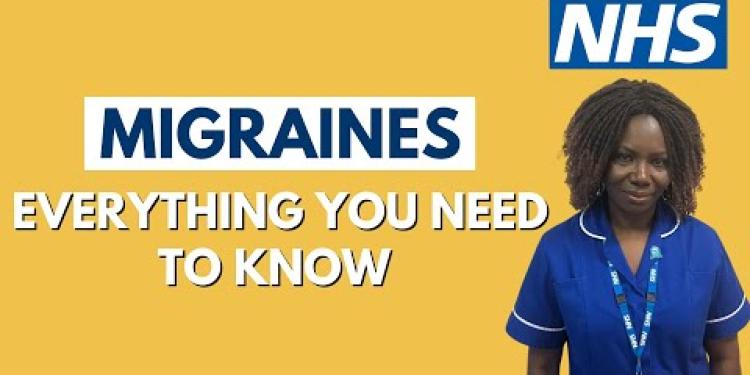Important Information On Using This Service
- Ergsy carefully checks the information in the videos we provide here.
- Videos shown by YouTube after a video has completed have NOT been reviewed by ERGSY.
- To view, click the arrow in the center of the video.
Using Subtitles and Closed Captions
- Most of the videos you find here will have subtitles and/or closed captions available.
- You may need to turn these on and choose your preferred language.
Turn Captions On or Off
- Go to the video you'd like to watch.
- If closed captions (CC) are available, settings will be visible on the bottom right of the video player.
- To turn on captions, click settings.
- To turn off captions, click settings again.
Find A Professional
Videos from Ergsy search
More Videos of Interestdiagnosis
Migraine: Understanding the Condition
What is a Migraine?
A migraine is a severe headache that is often accompanied by other symptoms such as nausea, vomiting, and sensitivity to light and sound. Migraines typically manifest as a throbbing pain on one side of the head, though the pain can occur on both sides. The condition can be debilitating and may last for hours or even days.
Types of Migraines
There are several types of migraines, including:
- Migraine with aura: This type is preceded by sensory disturbances such as visual flashes of light, blind spots, or tingling in your hands or face.
- Migraine without aura: The more common form, which occurs without the sensory disturbances that characterize a migraine with aura.
- Chronic migraine: Occurs 15 or more days per month, with at least 8 days involving migraine features, for more than 3 months.
Causes and Triggers
The exact cause of migraines is not fully understood, but it is believed to be related to abnormal brain activity that affects nerve signals, chemicals, and blood vessels in the brain. Common triggers include:
- Hormonal changes in women, especially related to menstruation
- Certain foods and drinks, such as aged cheese, alcohol, and caffeine
- Stress and anxiety
- Changes in sleep patterns or lack of sleep
- Environmental factors like bright lights or loud noises
Symptoms
Migraine symptoms can vary but often include:
- Intense, throbbing headache, usually on one side of the head
- Nausea and vomiting
- Increased sensitivity to light, sound, and sometimes smell and touch
- Visual disturbances such as seeing flashing lights or blind spots
- Dizziness or lightheadedness
Treatment Options
While there is no cure for migraines, several treatment options can help manage the condition:
- Medications: Over-the-counter pain relievers like ibuprofen or prescription medications such as triptans can help alleviate symptoms. Preventative medications may also be prescribed.
- Lifestyle changes: Maintaining a healthy lifestyle by managing stress, getting regular exercise, and maintaining a consistent sleep schedule can reduce the frequency and severity of migraines.
- Alternative therapies: Techniques such as acupuncture, biofeedback, and cognitive behavioral therapy (CBT) may provide relief for some individuals.
When to Seek Medical Advice
If you experience frequent or severe headaches, it is important to consult with a healthcare professional. Seeing a GP can help you obtain a proper diagnosis and appropriate treatment plan. If your migraine symptoms change or if you experience new symptoms, seek medical advice to rule out any other potential issues.
For more information, visit the NHS website on migraines.
Frequently Asked Questions
What is a migraine?
A migraine is a moderate or severe headache felt as a throbbing pain on one side of the head. Many people also have symptoms such as feeling sick, being sick, and increased sensitivity to light or sound.
What are the symptoms of a migraine?
The main symptom of a migraine is usually an intense headache on one side of the head. Other symptoms include nausea, vomiting, and increased sensitivity to light and sound.
What triggers a migraine?
Common triggers include stress, certain foods and drinks, hormonal changes in women, lack of sleep, and certain medications.
How is a migraine diagnosed?
A GP can diagnose migraines based on your symptoms and medical history. They may refer you to a specialist if your symptoms are severe or complex.
What treatments are available for migraines?
Treatment options include over-the-counter painkillers, prescription medications, triptans, anti-sickness medicines, and preventive treatments such as beta-blockers or anti-epileptics.
Can lifestyle changes help manage migraines?
Yes, maintaining a regular sleep schedule, eating regular meals, managing stress, and staying hydrated can help reduce the frequency and severity of migraines.
Are migraines hereditary?
Migraines can run in families, suggesting a genetic component, but the exact cause is still not fully understood.
How long does a migraine attack last?
A migraine attack can last anywhere from a few hours to up to 72 hours if untreated.
What is an aura in relation to migraines?
An aura is a warning sign that can occur before a migraine. It includes visual disturbances such as seeing flashing lights, zig-zag patterns, or blind spots.
Can children get migraines?
Yes, children can experience migraines, although their symptoms may differ slightly from adults. They might have abdominal pain and severe headaches.
Are migraines more common in women?
Yes, migraines are about three times more common in women than in men, often linked to hormonal changes such as menstruation.
Can weather changes trigger migraines?
Yes, changes in weather such as high humidity, temperature changes, and storms can trigger migraines in some individuals.
Should I keep a migraine diary?
Keeping a migraine diary can help you identify triggers and patterns, which can be useful for managing the condition and discussing with your GP.
Can exercise help reduce migraines?
Regular exercise can help reduce the frequency and severity of migraines for some people, but it's important to avoid strenuous exercise during an attack.
When should I see a GP about migraines?
You should see a GP if your headaches are severe, frequent, or if they interfere with daily activities. Also, seek medical attention if you experience new symptoms or if treatments are not effective.
Useful Links
Useful links from: Migraine
- NHS - Migraine Overview The NHS website provides an overview of migraines, including symptoms, causes, diagnosis, and treatment options available in the UK.
- The Migraine Trust The Migraine Trust is a UK-based charity that offers information, support, and research on migraines. Their website includes resources for patients and healthcare professionals.
- Migraine Action Migraine Action is a national advisory and support charity for people affected by migraines. Their website provides advice, support, and resources to help manage migraines.
- National Migraine Centre The National Migraine Centre is a UK charity that offers specialist care and information about migraines. The website provides access to specialist clinics and resources to better understand and manage the condition.
Useful links from: Migraine
- NHS: Migraine Official NHS page providing an overview of migraine, including causes, symptoms, diagnosis, and treatment options.
- The Migraine Trust The Migraine Trust is a UK-based charity dedicated to providing information and support for people living with migraine, funding research, and raising awareness about the condition.
- Migraine Action Migraine Action is a registered charity providing support, advice, and information to people affected by migraine in the UK.
- National Migraine Centre A leading UK charity providing migraine diagnosis and treatment information, including resources for managing migraine health and well-being.
Useful links from: What are headaches?
- NHS - Headaches Information from the NHS on the types, causes, symptoms, and treatments of headaches.
- Migraine Trust - What is a Headache? Detailed information provided by the Migraine Trust on different types of headaches, their symptoms, and management.
- Headaches - NHS Inform Guidance from NHS Inform on understanding headaches, including cluster headaches and tension headaches.
- The National Migraine Centre - Headache Disorders Resources from the National Migraine Centre offering insights into various headache disorders and their treatments.
More Videos of Interestdiagnosis
Have you found an error, or do you have a link or some information you would like to share? Please let us know using the form below.
- Ergsy carfully checks the information in the videos we provide here.
- Videos shown by Youtube after a video has completed, have NOT been reviewed by ERGSY.
- To view, click the arrow in centre of video.
- Most of the videos you find here will have subtitles and/or closed captions available.
- You may need to turn these on, and choose your preferred language.
- Go to the video you'd like to watch.
- If closed captions (CC) are available, settings will be visible on the bottom right of the video player.
- To turn on Captions, click settings .
- To turn off Captions, click settings again.

